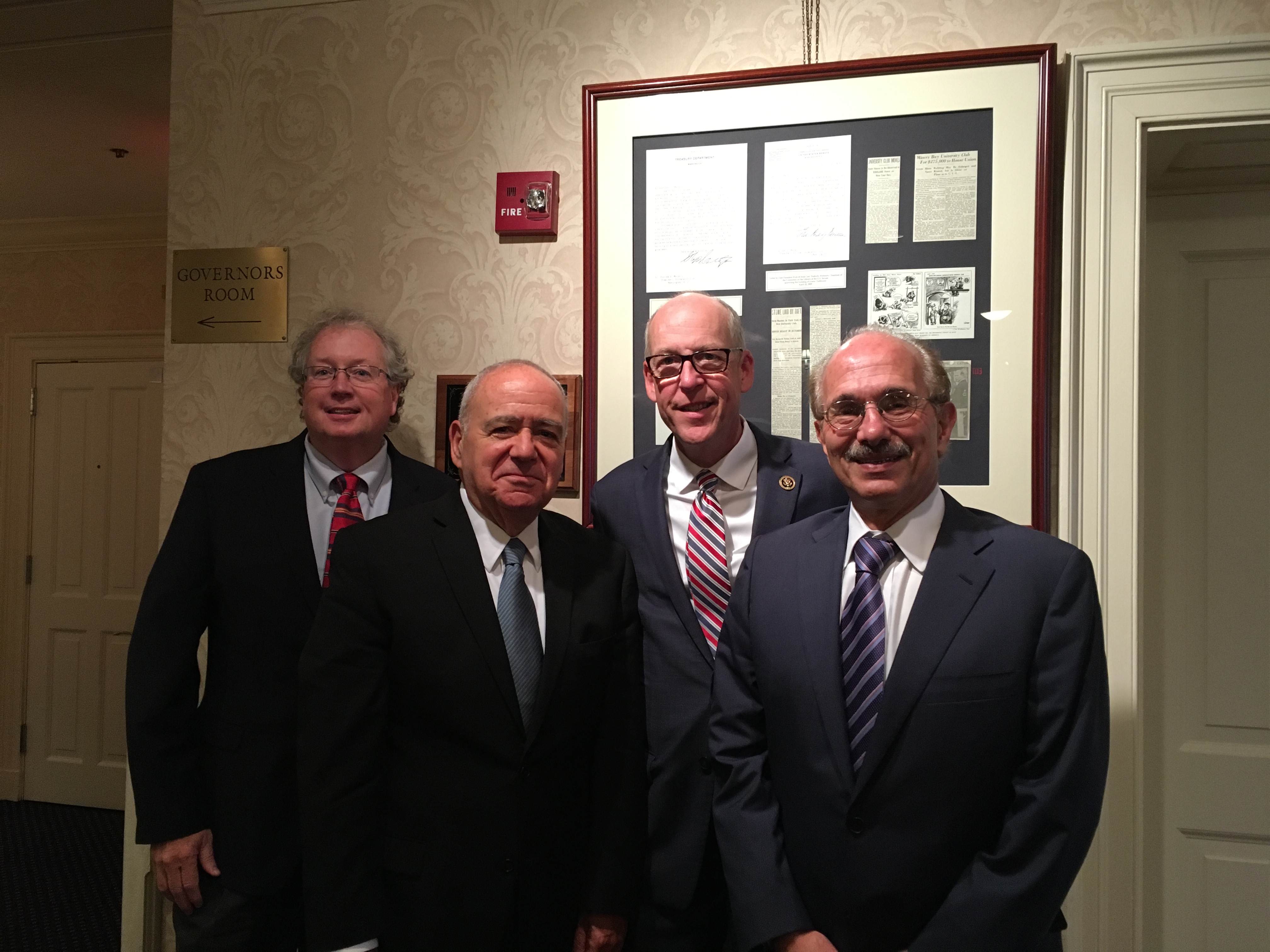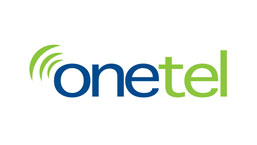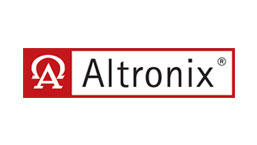For the past 24 months, TMA has been acting on the findings of its 2015 “Voice of the Customer (VoC)” initiative. This is the report on actions taken to address issues identified as critical during the VoC.
Coming in September — Your chance to weigh in, again or for the first time, on the direction YOU want to see your association take in the future!
Marketing and Messaging Report
In 2015, TMA (then CSAA) launched the “Voice of the Customer” (VoC) initiative to lay the foundation for the future direction of the Association. The initiative included surveys, conference calls, and in-person focus groups, in which TMA asked members to discuss the issues and actions they believed the Association needed to address to remain relevant and vital going forward.
One of the areas that rose to the top of the importance list was marketing and messaging. Members questioned whether the term “central station” was understood by the general public, and whether the Association needed to revisit its mission and membership structure in order to widen its scope of influence and strengthen its volunteer base.
Association committee members and staff took these findings and began collaborating on how best to address the concerns of the members. The resulting proposals were presented in spring 2016 for consideration at the General Membership Meeting held in June in Fort Worth.
At that meeting, members present voted to change the Association’s name to The Monitoring Association. The new name became official in March 2017. They also voted to add three new membership categories (Non-listed Monitoring Company, Non-listed Non-traditional Monitoring Company, and Security Technology Services Provider) and to adopt a new mission: to advance the professional monitoring industry through education, advocacy, and public sector relationships.
“Our members sharing their insight was the driving force for TMA to research and implement these monumental actions,” said Association president Pam Petrow. “The name change, new mission, and expanded membership categories were the direct result of leadership listening to what our members told us during the VoC process.”
Technology and Standards Report
Across all sectors, members raised their concerns about alarm industry technology and standards.
Members felt that there was a critical need to keep abreast of technology developments, and suggested that the Association assist with providing more opportunities for user group training from associate members. In response, in May 2016, TMA launched a new Technology Committee. “The Technology Committee will be a resource for regular members to learn about technologies that impact their businesses, and a conduit for associate members to provide early awareness of technologically-innovative new products and services,” said Executive Director Jay Hauhn in Dispatch. The committee has since presented a series of “Tech Talk” webinars in coordination with TMA associate member companies on topics such as SD-WAN, Next Generation Firewalls, and Cybersecurity issues (available to members at no charge and archived on the TMA website). It has also worked closely with the Education Committee on the programs at ESX, the Annual Meeting, and Fall Ops to present cutting-edge technology sessions at these TMA events.
Promoting and adhering to standards are one way for an industry to demonstrate its quality and commitment to excellence to partners and the public. In the standards arena, members reported that while they thought TMA was doing a good job managing the standards process, there was not enough communication about activities and member resources. Subsequently the Standards committee, and its activities under retiring chair Lou Fiore and then-new chair Steve Shapiro, was spotlighted with a cover story in the Spring 2016 Dispatch. As the committee works to advance TMA, UL, and NFPA standards, as well as a remote station standard inherited from ESA, its members are committed to providing regular updates to be shared with the membership.
Committee Practices and Communications Report
Many of the initiatives of the Association are planned and coordinated by our various committees. VoC participants asked TMA to review committee practices and communications to encourage engagement and action. After this process, TMA took the following actions:
- In 2016, committee meetings at the Marco Island Annual Meeting were moved from two days before the beginning of the education program to the day before, to help committee members participate and control travel costs. (This schedule continues in 2017 in Scottsdale.)
- To encourage more cross-committee communication, in August 2016 committee chairs began participating in quarterly conference calls to share information and to seek support for committee initiatives. For the same purpose, at the 2016 Annual Meeting and 2017 ESX, certain committees began meeting jointly. (This will also be the case at the 2017 Annual Meeting.)
- AICC is one of the most valued committees and members wanted to know about its activities. TMA began to include a quarterly AICC update in Dispatch and post AICC content on the TMA Blog and in TMA Signals.
- A government relations committee was launched at the end of 2016 to help members stay informed about what TMA is doing on their behalf in this area. Regular updates are posted on the TMA Blog.
- The committee portion of the TMA bylaws was reviewed and updated in early 2017.
Public Sector Engagement, Law Enforcement, Fire Protection, and ASAP Report
During the conversations, members made it clear that public sector engagement remains a priority and in fact, sets our association apart from others in the industry. Members felt that outreach efforts are important and that how the monitoring industry engages with first responder associations impacts many of TMA’s initiatives. Here are some of the actions we’ve taken to support this priority:
- Our new mission, adopted in June 2016, explicitly states that public safety relationships are key to our efforts to advance the professional monitoring industry.
- We relaunched the Public Safety Liaison Committee with a new chair, and subcommittee chairs for fire and law.
- We continued to bestow the Public Sector Award, first announced in 2015, to a public sector individual who has made significant contributions to the ASAP program. (Check out the winners in 2016 and 2017.)
- We have strengthened our relationship with NFPA. Executive Director Jay Hauhn committed to attending appropriate meetings to represent TMA, and we are taking steps to ensure all TMA member companies have an individual on staff who is an NFPA member.
- Continuing outreach to PSAPs and state-level decision makers has led to significant growth in the ASAP program this year.
- We continue to partner with SIAC and ESA to hold receptions for the fire chiefs, police chiefs, and sheriffs at their annual conferences (among other initiatives with those organizations), and the AHJ Open Forum remains a key part of our Annual Meeting.
Membership Report
It was no surprise that growing membership and providing value to members topped the list of priorities. Here are some of the actions that committees and staff have taken to support the VoC directives:
- Increase efforts to engage the next generation of leaders
The TMA NexGen subcommittee was established and the first meeting of young professional members took place at the 2016 Annual Meeting. Outreach and activities have continued in 2017 and more structured leadership development and mentoring programs are planned for 2018.
- Refocus attracting members and show benefits of membership through more personal outreach
The Membership Committee has analyzed current member benefits by membership category to promote TMA membership value and identify potential opportunities. TMA membership staff are contacting individual members for one-on-one conversations about TMA value. A targeted membership drive is planned for 2018.
- Investigate new membership category to allow those without a Central Station to join the association
Three new membership categories were proposed in 2016 and approved by the membership at the 2016 General Membership Meeting in Fort Worth. Promotion began in 2017 and we already have at least one new member in each of the new categories.
- Succession planning across the board in consideration of next generation of leaders
We have made a concerted effort to fill co-chair positions on the various committees and are considering ways in which young professionals can have better representation.
- Re-develop Five Diamond Benefits Package and Marketing Tool Kit
A Marketing Tool Kit to assist Five Diamond companies to promote their status was launched in 2016. The Five Diamond Committee is currently reviewing Five Diamond for ways to “put more teeth” into the designation and subsequently increase its prestige.
Education and Meetings Report
The topic of education, one of the most valuable benefits provided by any association, provoked a number of comments and discussions across all sectors. Since the VoC launch, TMA staff and committees have taken the following actions in response to members’ input:
- Monitoring Centers value the online training program!
A comprehensive review and re-write of the TMA Level 1 training is nearing completion. This was a major project, requiring tremendous amounts of volunteer and staff time.
- Annual Meeting and Fall Ops programs should continue to focus on addressing industry threats.
Addressed by the continued “reimagining” of the Annual Meeting education program, which has been greatly upgraded in 2015, 2016 and 2017 to provide high-level leadership and industry intelligence presentations. Fall Ops content has been planned with direct input from attendees through pre-event surveys and session evaluations.
- TMA should consider offering training that provides educational credits that fully meet state licensing requirements.
Part of the TMA Level 1 re-write has been a concerted effort to ensure that the course meets the highest bar for state licensing requirements. TMA is working to identify a provider of CEU accreditation for our online webinars and other courses.
- Use more virtual education/conference events to allow participation and engagement for those with travel budget restrictions.
TMA Signature Series and Tech Talk Webinars are now offered nearly every month. We will be piloting virtual product reviews in the next few months to introduce our members to new products and technologies.
- Consider partnering with other online and classroom training providers to broaden course offerings to include business and management courses.
TMA collaborated with CANASA to develop the CANASA 2017 Monitoring Station Symposium and with SIA to promote free Project Management/Budgeting webinars for TMA members. TMA vetted and recommended discounted customer service courses offered by Telephone Doctor that are directly related to TMA members’ needs.
TMA members, watch your email for the “VoC 2.0” survey in September!
Questions or comments? Contact communications@tma.us.




 On July 6, Dane County, Wisconsin became the 26th agency in the U.S. –and the first in the Badger State–to go live with the
On July 6, Dane County, Wisconsin became the 26th agency in the U.S. –and the first in the Badger State–to go live with the  e’ll check back with Paul Logan in a few months to report on Dane County developments.
e’ll check back with Paul Logan in a few months to report on Dane County developments.







